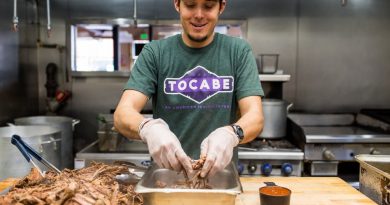Best Place for A.I. Jobs (New Report Says) Won’t Surprise You
The San Francisco Bay Area has ruled the technology industry for decades, from the early days of personal computers to the social media boom.
Now a new study from the Brookings Institution suggests that the rise of generative artificial intelligence, fueled by the popularity of the ChatGPT chatbot, could further solidify the Bay Area’s hold on tech.
The report, which the Washington think tank released on Thursday, said generative A.I. could magnify a “winner take most” geography for jobs. And the winners, so far, are San Francisco and San Jose, Calif.
While that may not be surprising, the Brookings report may help to dispel the notion that smaller tech hubs like Austin, Texas, or Miami will be home to the next generation of big tech companies. If anything, it suggests the Bay Area’s hold on the tech industry could grow stronger.
Brookings researchers found that across more than 380 metro areas in the United States, a quarter of the roughly 2,200 generative A.I. job postings during the last year were in the Bay Area.
“This exciting new technology may drive more clustering, and that is a problem economically, demographically and for society,” said Mark Muro, an author of the report and a senior fellow at Brookings Metro, a research unit that focuses on cities and public policy.
The job postings follow a generative A.I. investment frenzy, which is heavily skewed toward the Bay Area. In addition to industry giants like Google and Meta, the nine most valuable start-ups in generative A.I. are based in San Francisco or Silicon Valley, including OpenAI, Scale AI, Anthropic, Inflection AI, Databricks and Cerebras, according to PitchBook, which tracks start-ups.
Job postings for A.I. work are not nearly as common as postings for other technology skill sets, and A.I. expertise has for years been a hot and highly paid specialty. Tech hubs outside the United States, like Toronto and Cambridge, England, have also drawn their share of A.I. researchers.
The Brookings researchers analyzed U.S. job listings data gathered by Lightcast, a labor analytics firm. Postings were counted as generative A.I. jobs if they included at least one of three terms: generative A.I., ChatGPT or large language models. Large language models are used to build generative A.I. software.
New York ranked third in generative A.I. job postings. It is home to a high-profile generative A.I. start-up, Hugging Face, and many of the big tech companies have teams of A.I. researchers in the city.
As a center for many industries other than tech, New York may offer a glimpse into how the technology will spread beyond the early work being done in the Bay Area.
“Every major financial, media, advertising and consulting company is immersed in figuring out how they are going to adapt to and use generative A.I.,” said Julie Samuels, executive director of Tech:NYC, a nonprofit industry group. “And that’s happening every day here.”
But the increasing number of A.I. jobs in New York, many of them high paying, does not address the challenge of democratizing the technology across the country.
A series of other studies in recent months have assessed the likely economic impact of generative artificial intelligence, the technology engine behind chatbots like OpenAI’s ChatGPT and Google’s Bard that can write business reports, computer code and poetry. That research has focused on the potential of generative A.I. to boost productivity, transform work and automate millions of jobs.
Research tracing hundreds of new technologies over decades shows that the pioneering hubs for development typically retain a vast amount of the wealth and skills generated from them. And the new Brookings report is essentially an update to a 2021 study on the geography of A.I., which raised concerns about the clustering of A.I.-fueled prosperity.
Still, the new report does point to increased support and funding for “place-based industrial policy,” which seeks to increase economic prosperity in more places.
For example, under the CHIPS and Science Act, signed into law last year, the federal government has made an initial appropriation of $500 million to set up 20 regional technology hubs. Investment in A.I. technology and training is identified as a priority for those hubs.
“We need to create ecosystems of tech innovation in more communities around the country, especially those that have historically been overlooked,” Gina Raimondo, the commerce secretary, said in an emailed statement.
The National Science Foundation has established 25 A.I. Institutes across the country, working with government agencies and companies. The program’s $500 million is being disbursed in grants of $20 million each for A.I. programs, which conduct basic and applied research in fields like climate change, agriculture and education.
Grants are going to university-based institutes including ones at the University of Oklahoma, Ohio State University, Iowa State University, Washington State University, the Georgia Institute of Technology, the University at Buffalo and the University of California, Irvine.
With artificial intelligence, there may be an opportunity for a broader geographic distribution of wealth than with some past technologies.
“We’re just talking about information, bits, and we don’t have to be in the same place to work on bits,” said Michael Littman, division director for information and intelligent systems at the National Science Foundation.
With the rise of A.I., Dr. Littman said, “we really need to have as many people as possible participate in this shift.”
The Brookings report calls for sustaining and expanding such policies. “We’re starting to see a recognition that the geography of technology is really important for the shape of opportunity in America,” Mr. Muro, the co-author of the report, said.
Steve Lohr covers technology, economics and work force issues. He was part of the team awarded the Pulitzer Prize for explanatory reporting in 2013. More about Steve Lohr
Source: Read Full Article


